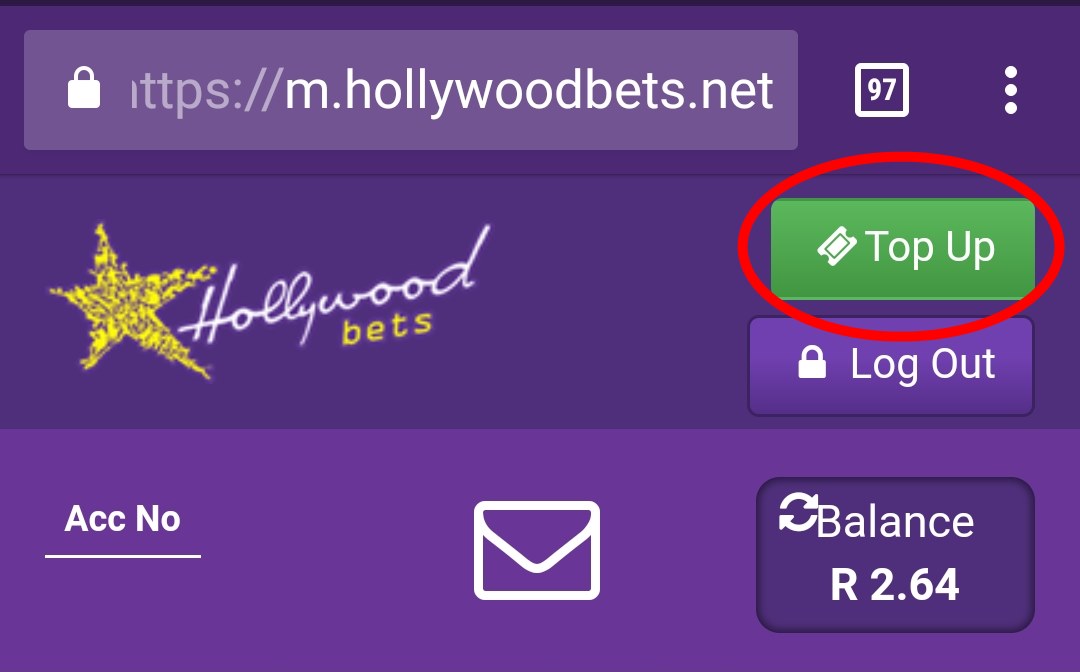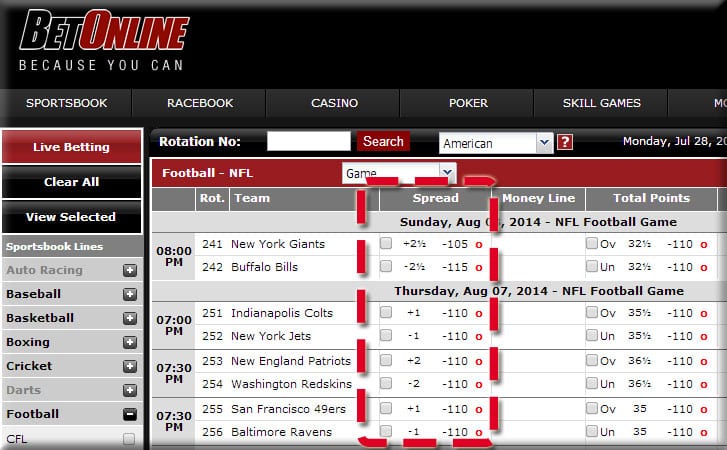- Baseball Betting. Baseball offers similar markets to the ones listed previously, with the noticeable difference being the inclusion of a pitcher pre-game. Odds are heavily determined on the starting pitcher, so if a late change is made to the pitcher, some online sportsbooks will refund bets. Here's an example of a line in MLB betting.
- Sports betting is the activity of predicting sports results and placing a wager on the outcome. The frequency of sports bet upon varies by culture, with the vast majority of bets being placed on association football, American football, basketball, baseball, hockey, track cycling, auto racing, mixed martial arts, and boxing at both the amateur and professional levels.
- College Football, Baseball and Basketball Betting Odds A money line bet is on a team to win the game outright (with no point spread) at an adjusted cost. The favorite will have negative odds, while the underdog will have positive odds. The difference here is in the prize or payout, depending on which topic.
- Sports Betting Odds; Sports Betting Odds Explained Understand the odds in sports betting with our guide Sports betting is one of the most popular areas of gambling, with many favorites such as NFL.
When you bet for the underdog, it is called betting 'against the odds.' For example, if odds are 3/1 for the Cowboys this Sunday, then it is three times more likely that they will lose than win. Odds of 3-1 indicate that if you bet $100, you will win $400, the original amount of your bet plus the profit.
If you are just getting into betting on baseball, then you need to have a basic understanding of the different types of bets you can place.
Each baseball season I am flooded with e-mails asking about the basics of how to wager on this sport.
This article serves as a great beginners resource for learning how to bet on baseball.
Below, I’ve provided a quick explanation on how to bet money lines, game totals, team totals, run lines, series, parlays, prop bets, futures, and season win totals.
Understanding How the Odds Works: Basic Baseball Betting Options
Money Line
This is the most popular way people bet on baseball.
A money line wager is pretty straight forward. You are simply placing a bet on who you think will win the game.
Odds are displayed with the away team listed first or on top and the home team listed second or on the bottom. The side with the (+) plus sign indicates which team is the underdog, while the (-) minus sign indicates the favorite.
If you want the bet on an underdog the number behind the plus sign is what you will win if you bet $100. If you take the favorite you have to bet the number following the minus sign to win $100.
It’s also important to note that with baseball money lines you have the option of listing pitchers or going with “action.”
What listing a pitcher with your bet does is make sure that pitcher starts for the bet to be valid. If you list a pitcher and he doesn’t start, the bet is a push and you will get your money back.
You can list the pitcher of the team you are taking, the opposing pitcher, or both. If you list neither pitcher it’s an “action” bet and as long as the game is finished your bet will be graded.
Example:
Philadelphia Phillies +120
New York Mets -130
In this example the Phillies are the underdog playing on the road against the Mets. If you like betting underdogs then taking Philadelphia to win a $100 bet would win you $120. If you wanted to take New York you would have to risk $130 to win $100.

*In the example above the the odds are listed using dime lines. A dime line just means the sportsbook uses a 10 cent spread between the favorite and the underdog. A lot of books do this, but others will have a 20 cent spread.
If you are playing at a book with a worse set of lines like this your profits can really be eaten up over the course of a season.
Total
Over/under or totals bets are wagers in which you are predicting the total runs scored by both teams.
Oddsmakers will set a total for each game. You have the option of either betting on both teams to score more or less than the number listed.

It’s important to note that runs scored in extra innings count towards the total. If a game ends exactly on the total, it’s considered a push, and your bet is simply refunded. All wagers are considered a push if the game is suspended prior to playing a full 9 innings or 8.5 if the home team is leading.
Example:
Philadelphia/New York
OVER 8 -120
UNDER 8 +100
In this case if you wanted the OVER you would have to bet $120 to win $100, while the UNDER would only require a $100 bet to win $100.
If you think betting totals is something you are interested in, check out our strategies for betting MLB totals.
Team Totals
This is similar to betting the over/under on the total of a game, expect here you are focusing on simply the total runs scored by one team instead of both.
Mlb Betting Odds
This is a popular wager when you have a pitching mismatch.
If one team has their ace on the mound and the other team is calling a guy up to make a spot start, it’s hard to feel confident betting the over/under for both teams combined. Instead you would rather take the individual team under on the team going up against the ace and the over on the team against a spot starter.
The problem with this wager is that books will typically make you pay big juice on both sides in an obvious spot like this, decreasing your chances of showing a profit over the long-run.
The key is finding value where it’s not so obvious. For example, there could be value on a individual team under, who is facing an average starter that’s a fly ball pitcher with the wind blowing in or a road team like the Rockies who score far fewer runs on the road than they do at home.

Run Line
The run line is the closest thing you will find to a spread in baseball betting. The standard run line is 1.5, which is what we will focus on here.
The favorite on the money line will be listed at -1.5 on the run line. What this means is that the team laying -1.5 runs has to win by 2 or more or you lose your bet.
Explain Betting Odds +162
On the flip side of this, the underdog on the money will be listed at +1.5 on the run line, which means they either have to win the game outright or lose by just 1 run.
Example:
Philadelphia +1.5 (-140)
New York -1.5 (+130)
Due to the fact that the majority of baseball games are decided by 1 run or see the underdog winning outright, the odds change drastically from the money line.
If you remember back to our first example where the Mets were -130 on the money line (risk $130 to win $100). If you were to play the -1.5 run on New York, you now get them at +130 (risk $100 to win $130). The only difference is they have to now win the game by 2 or more runs instead of just winning the game by an margin.
Run lines are a popular way to reduce your risk if you like the favorite. For instance, late in the year many baseball favorites can be -200 or more. If you take those teams on the run line you reduce the amount you have to wager relative to what you will win.
More Ways to Gamble and Invest Long-Term on MLB Games
Series Betting
Unlike other sports during the regular season, where teams rarely play the same opponent in consecutive games, in baseball teams typically play anywhere from a 2-4 game series against the same opponent.
Instead of trying to go game-by-game and determine who will win, you can place a wager on who you think will win the series.
The odds are presented in a similar format to that as a money line on an individual game, but the favorites will come at a much higher price.
Baseball Betting Odds Explained For Boxing
It’s not uncommon for the better team to lose a game against a weaker opponent, but more times than not they will win the majority of the time. Click the following link, for more on series betting,
Parlays
A parlay is when you combine two or more bets together. The only catch is that all of the bets must win or you lose the wager.
What makes parlays a popular bet, is they allow you to reduce the risk while increasing the payouts. The only problem is that probability of winning a parlay bet is much lower than that of betting games individually.
For example, say you liked 5 plays and they were all listed at -120 on the money line. If you parlay 5 teams and go 4-1, you win nothing. On the other hand, if you bet each game individually, you would have won $280 ($100 + $100 + $100 + $1000 – $120).
If you are thinking about betting parlays, be sure to check out our complete guide to betting baseball parlays.
Props
Some books have proposition bets for both individual games and the entire season. They will post odds on nearly everything from how many strikeouts a pitcher will have, who will win the MVP, how many home runs a player will have, what team will score first, etc.
I do like prop bets, but you have to see how big of a spread your book offers. On a lot of these exotic wagers books know they are exposed and will thus only offer 30+ cents on the action, which means you have to be able to hit a high percentage in order to show a profit.
Check out our MLB player props page if you are interested in making a wager or just want a better idea of all the different prop bets available.
Futures
If you want the biggest bang for your buck look to place your action on futures wagers. The most common future bet is the odds to win the World Series, but you can also bet on who will win each division, as well as the pennant.
The only problem with futures bets is that you must be prepared to have a chunk of your bankroll tied up for close to 7 months . This is why I recommend not getting carried away with placing too many future bets before the season starts, as there’s more money to be won with the actual games.
Season Win Totals
One of my favorite types of futures bets are season win totals. Prior to the season starting, oddsmakers set a number of wins for each team and give you the option of betting whether you think they will go over or under that mark.

If you put the research into it, you can normally find a few strong bets each season. The thing to keep in mind is that the books aren’t just throwing numbers out there for win totals. If a team has a win total set at 78 when they only won 70 the previous year, chances are the smart play is on the over not the under.
Here’s a link that includes a complete list of team win totals for the current season, along with my recommendation on whether you should take the over or the under.